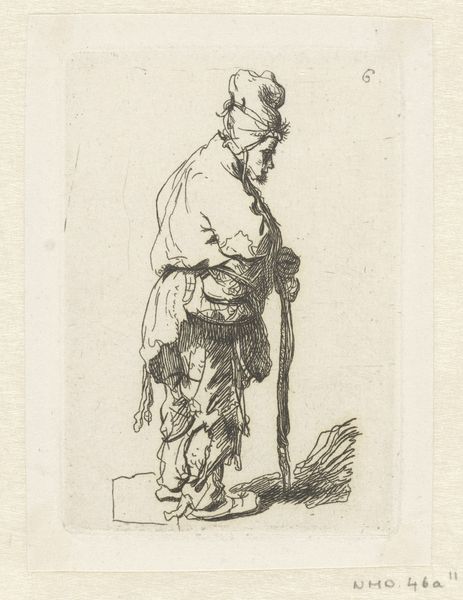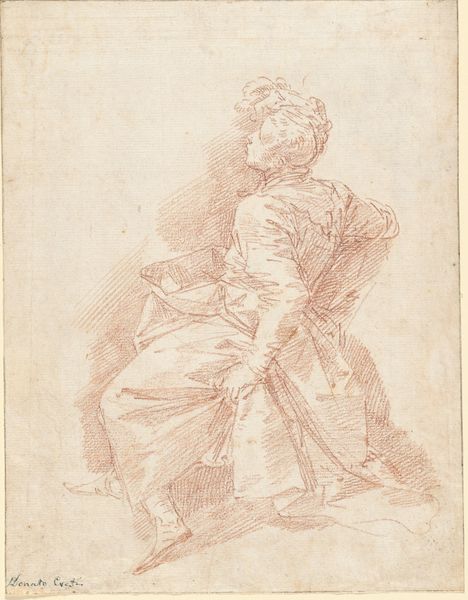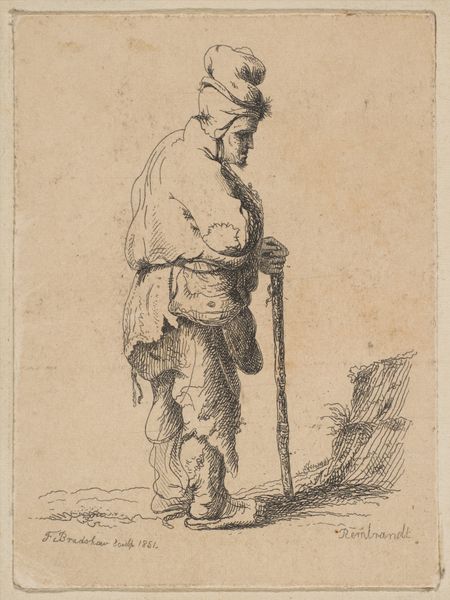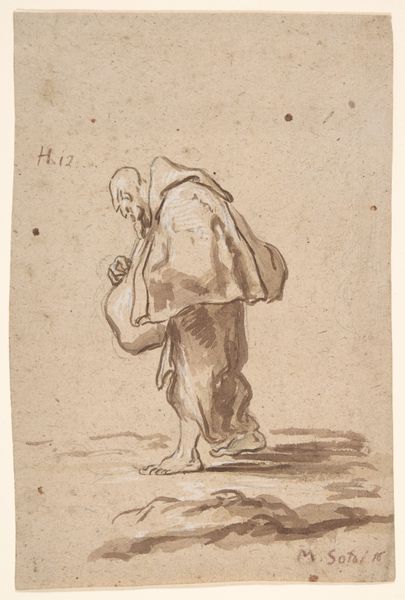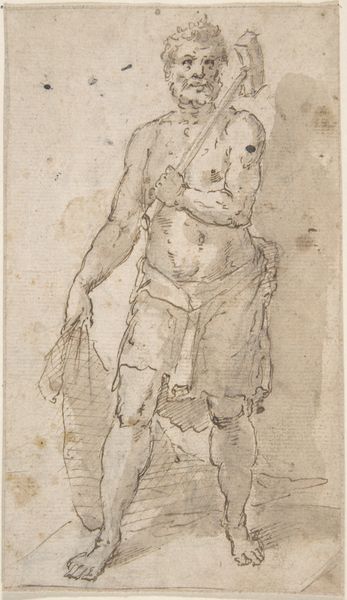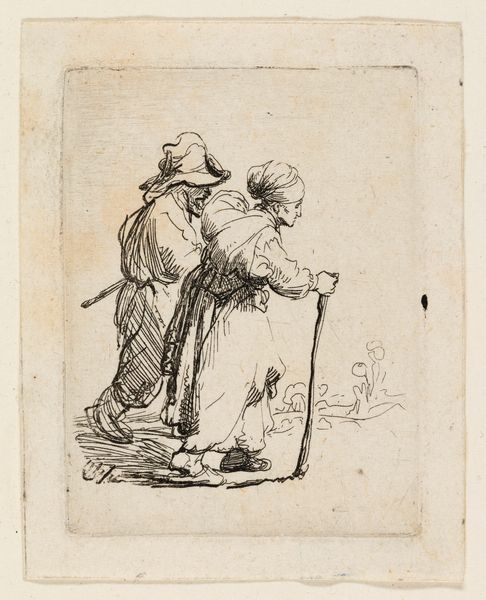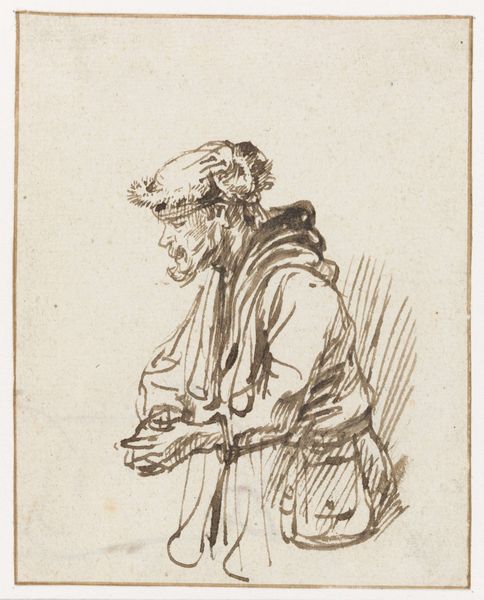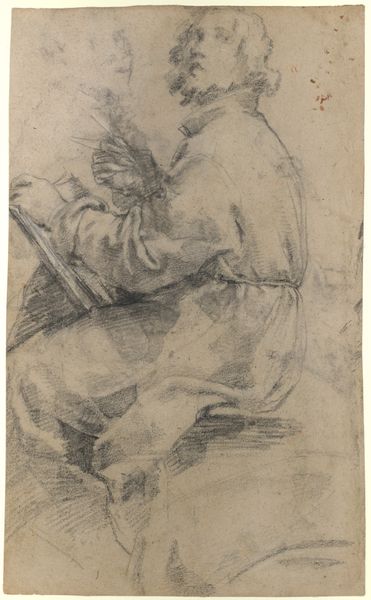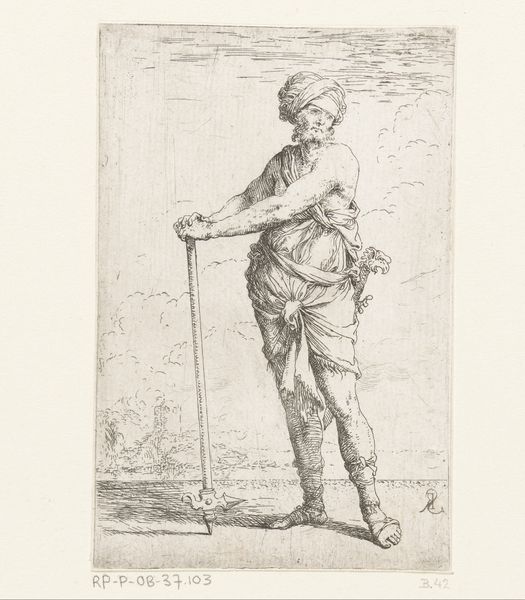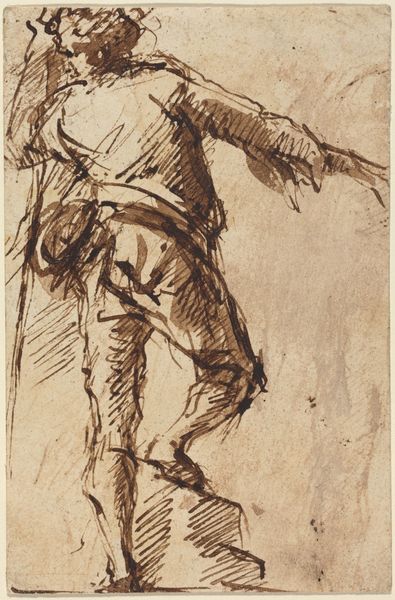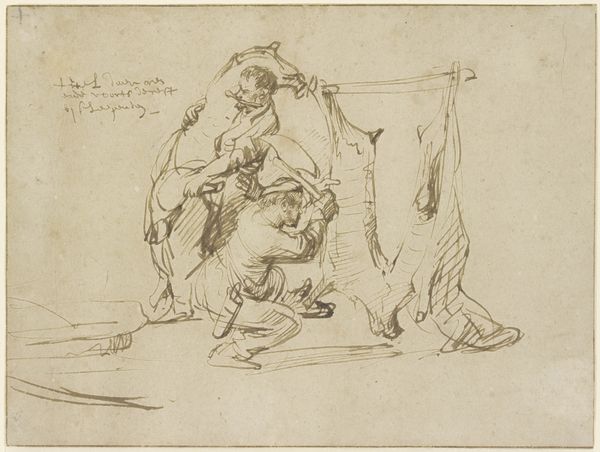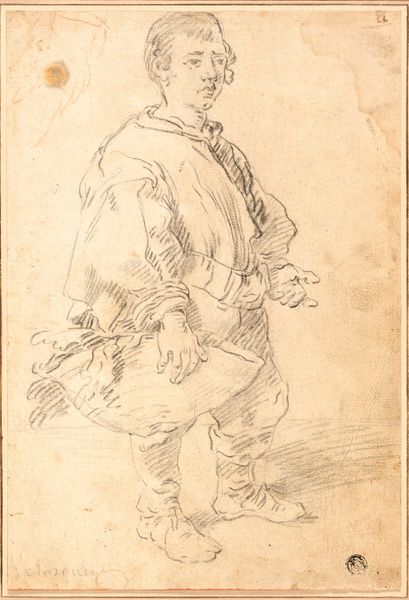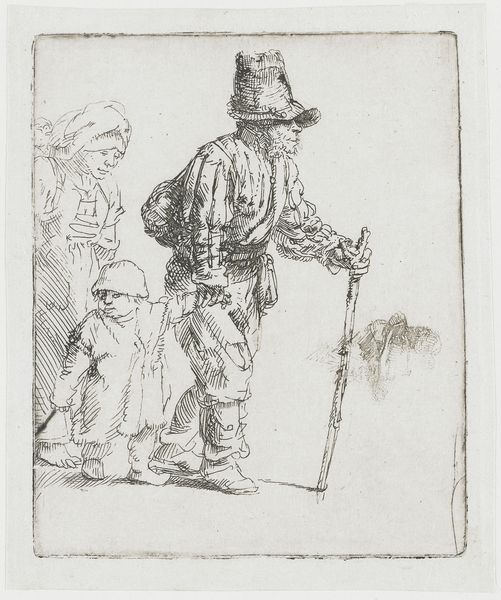
drawing, etching, paper
#
portrait
#
drawing
#
amateur sketch
#
toned paper
#
light pencil work
#
quirky sketch
#
etching
#
pencil sketch
#
paper
#
personal sketchbook
#
sketchwork
#
sketchbook drawing
#
genre-painting
#
sketchbook art
Dimensions: 85 mm (height) x 53 mm (width) (plademaal)
Curator: Let’s discuss this 18th-century etching from SMK, Statens Museum for Kunst, titled “Beggar leaning on a stick, facing left”, created by an anonymous artist. My first thought is how fragile and fleeting it seems. Editor: I agree. The fragility comes, I think, from the medium. The use of etching emphasizes a delicate and impoverished quality of life through light pencil work, giving an empathetic lens on the life of an indigent person from this era. It is evocative of sketches made on personal sketchbooks, which feels very intimate. Curator: Indeed. Consider the material circumstances: paper was becoming increasingly available, influencing artistic practice. It’s a work on paper intended perhaps for a sketchbook—not high art, necessarily, but a record of someone’s existence, of labor. The paper and ink become instruments documenting marginal figures often ignored. Editor: Absolutely, the figure itself reflects the social inequalities of the 18th century, particularly focusing on those disenfranchised by systems of power. Note how the body, rendered in light pencil strokes, seems almost spectral, calling into question themes of visibility, precarity, and the lived experiences of the impoverished in broader portraiture traditions. The beggar almost vanishes. Curator: Vanishing, yes, and yet there’s the lasting physical object. The etching is itself a commodity, isn’t it? Consider its creation. A metal plate needs to be etched, the print made. It all hints at systems of production that underscore the economic realities of the era, in ways mirroring and perhaps inadvertently supporting the systems that marginalize the beggar it portrays. Editor: I’m struck by the ambiguity surrounding the artist’s anonymity. Who sketched this, and under what conditions? What motivated the act? Knowing more about that labour, its social position and context could unveil compelling class tensions or cultural narratives informing this creation and reflecting their contemporary reality. Curator: I agree; there’s a beautiful tension in those questions. Despite lacking a known artist and more context, we can analyze material means to illuminate 18th-century society in miniature. Editor: Ultimately, this “Beggar” serves as both a window into a specific life, and the wider context of production, circulation and human interactions, leaving a striking invitation to delve into the stories embedded in its delicate lines and shadows.
Comments
No comments
Be the first to comment and join the conversation on the ultimate creative platform.
